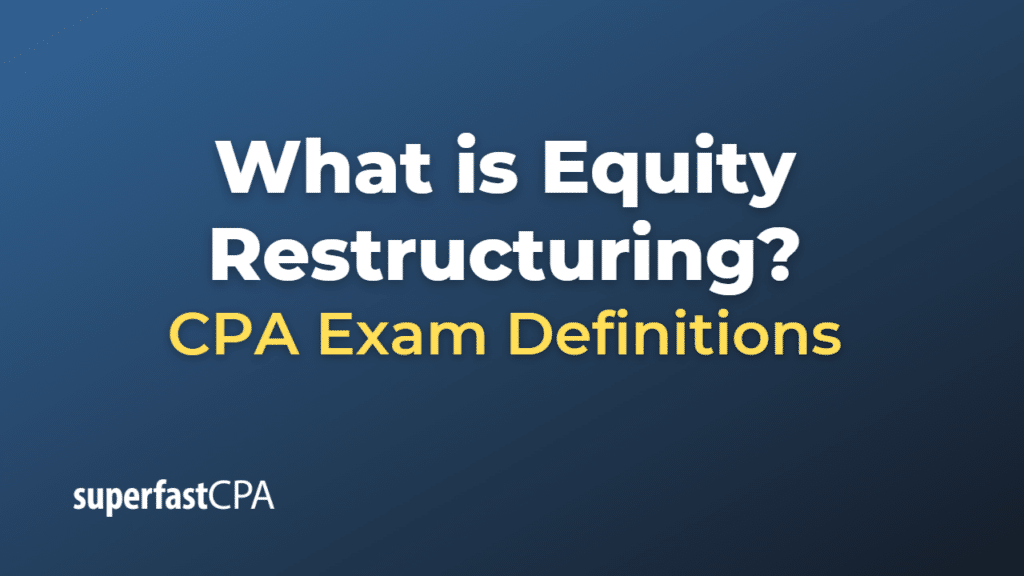Equity Restructuring
Equity restructuring is a process in which a company changes its capital structure, typically to rebalance the ratio of debt and equity financing it uses.
This can be done in several ways:
- Issuing or repurchasing shares: A company might issue new shares of stock to raise equity financing, or it might repurchase existing shares to reduce its equity base.
- Converting debt to equity: Sometimes, particularly during financial difficulties, a company might negotiate with its creditors to convert some or all of its debt into equity, reducing its debt load and giving creditors an ownership stake.
- Capital reorganization: This involves a more comprehensive restructuring of the company’s capital, which could include changes to the company’s debt structure, alterations to the equity base, or even bankruptcy proceedings in severe cases.
Equity restructuring can have significant implications for a company’s financial health, risk profile, and ownership structure. The right balance of debt and equity can improve a company’s financial stability and potential for growth, but it requires careful planning and execution. Also, existing shareholders might face dilution of their ownership if new shares are issued.
While companies often restructure equity voluntarily to optimize their capital structures, sometimes it’s done out of necessity, such as during financial distress or bankruptcy, when a company needs to reduce its debt load and secure new financing to continue operations.
Example of Equity Restructuring
Suppose Company XYZ, a manufacturing company, has been struggling with a significant amount of debt. The interest payments on this debt are high, and the company is having difficulty maintaining its cash flow, leading to financial distress.
In response to this situation, Company XYZ decides to undergo an equity restructuring to reduce its debt burden and improve its financial stability. The company negotiates with its creditors and arranges to convert $1 million of its outstanding debt into equity.
Now, instead of owing $1 million in debt, the company issues new shares to its creditors equivalent to $1 million in value. This move reduces the company’s overall debt, and consequently, its interest obligations, freeing up more cash for operations.
However, the existing shareholders now own a smaller proportion of the company because the new shares have diluted their ownership stake. On the other hand, the company’s financial position has improved because of the decrease in debt, which might benefit shareholders in the long run if it leads to improved financial performance and a higher stock price.
This is a simple example. In reality, equity restructuring is a complex process involving many stakeholders, including the company’s management, shareholders, creditors, and possibly external advisors or negotiators. It must be planned and executed carefully, with a thorough analysis of the potential impacts on the company’s financial position, risk profile, and shareholder value.













